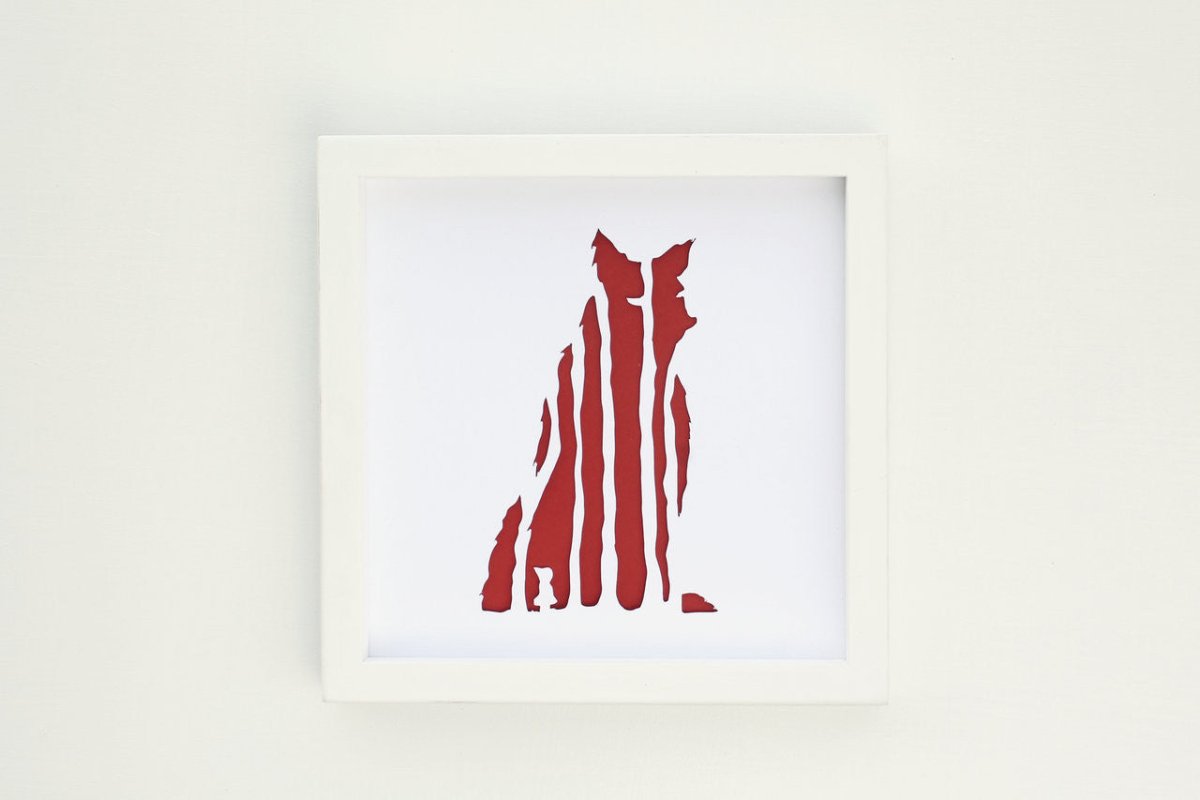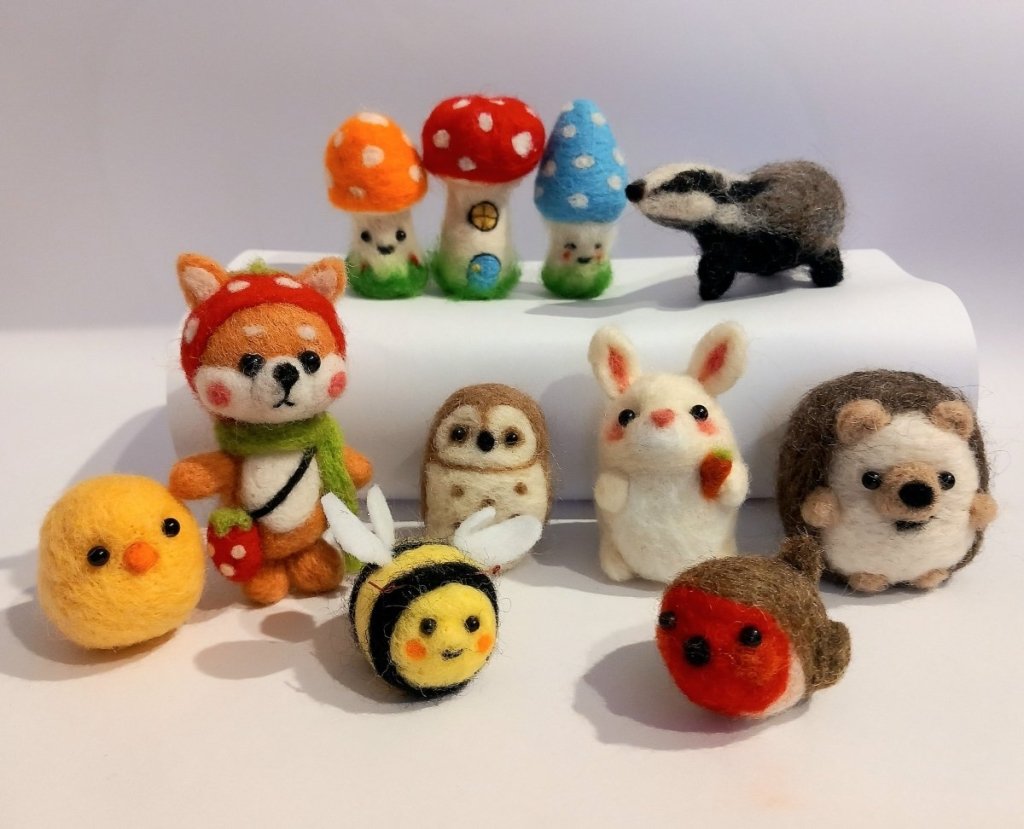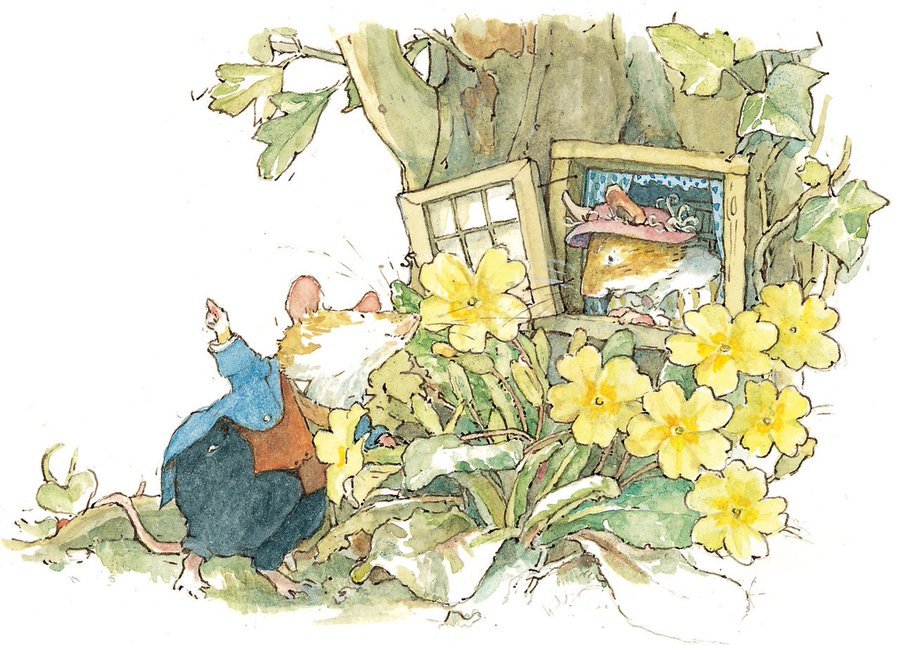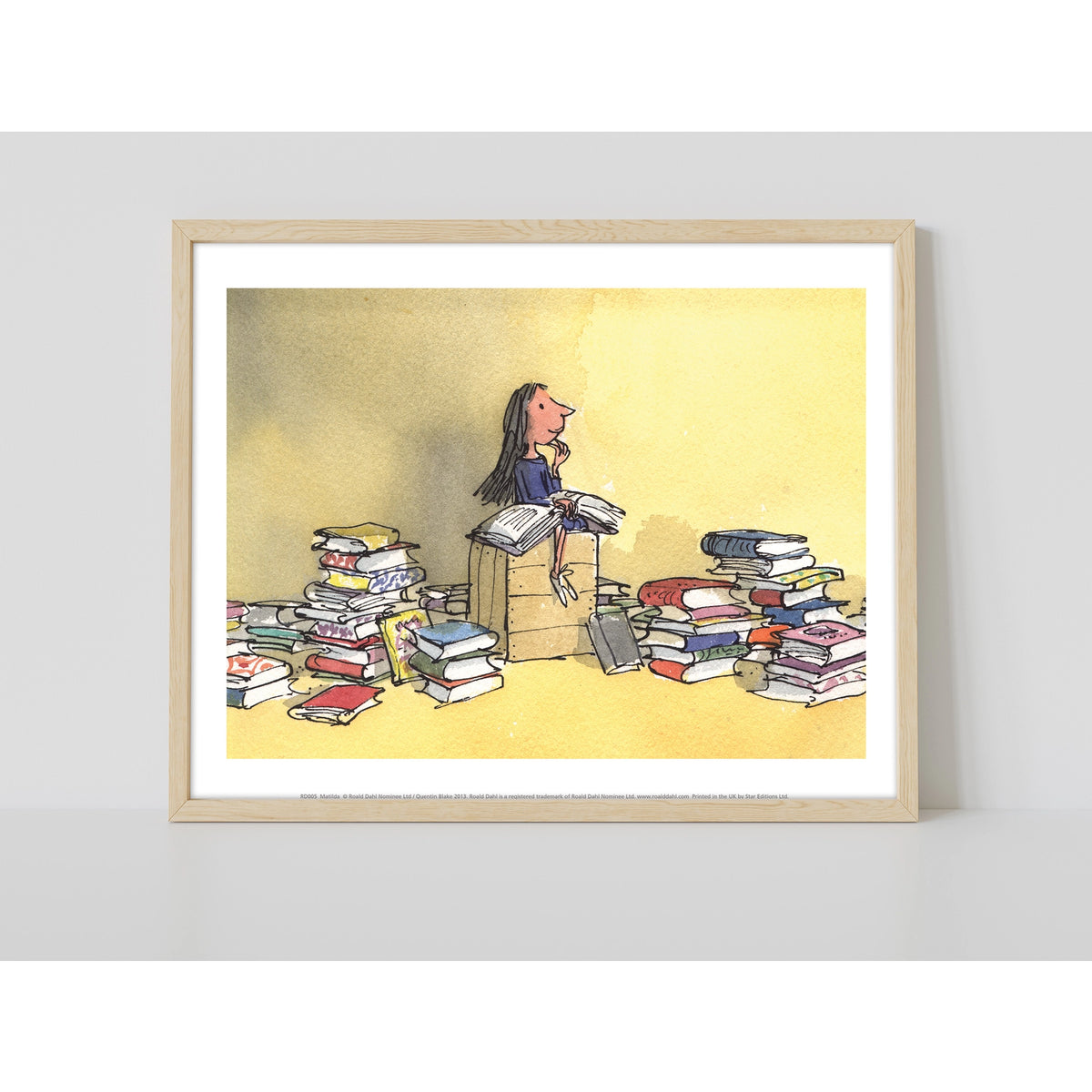Giving a New Look to the Greatest Children's Stories Ever Told

When it comes to stories, it seems that the secret to immortality is reinvention.

"Seeing Red" (based on Red Riding Hood). Framed 8"x8" two-layer papercut. Available in-store only.
Take for instance the story of Red Riding Hood, which can be traced back to an eleventh-century Belgian poem. Or another favourite, Sleeping Beauty, whose origins go all the way back to a thirteenth-century medieval romance.
Classic stories such as these don’t endure simply because they pass from one generation to the next – they endure because they invite re-imagining. This may explain their lasting appeal for so many artists and writers who dare to explore original ways of connecting the stories with a new generation of readers.
One such artist is Ger from Dublin-based creative studio UNIT. (the period is deliberate), who partnered with Tales for Tadpoles in autumn of last year to create a dazzling range of pieces inspired by children’s classics such as The Iron Man, Red Riding Hood, Alice in Wonderland, and The Owl and the Pussycat.

"Into View" (based on The Iron Man). Framed 8"x8" two-layer papercut. Available in-store only.
“We’ve focused on a small number of classics for the moment,” he tells us. “There’s a world of great stories to choose from and ideas can come from anywhere, so we had to narrow it down.”
Slowing Things Down
With some pieces designed to be hand-printed and others employing multiple layers of paper, UNIT.’s intention has always been to impart an element of craft and appreciation back into the stories they take inspiration from.
“Digital technology makes everything so much more readily available. That need for instant gratification just leads to things becoming more disposable too, in my opinion. I felt that it would be a total betrayal of such classic stories to produce something that didn’t require plenty of thought and creative energy, so we put a lot of time making pieces that reward concentration – just as the stories do.”
"1001" (based on The Arabian Nights). Stenciled print. Available in-store and online.
Given the wealth of source material to choose from, how exactly did the selection process work? Was there a particular set of criteria?
“Choosing the right stories wasn’t really an exact science. Sometimes it was just a tone that appealed. With Red Riding Hood, for example, it was the sense of something sinister lying just below the surface that inspired us; with Alice in Wonderland it was the incredible dreamscape of the world that we found compelling."
"Other Side of What?" (based on Alice in Wonderland. Stenciled print. Available in-store and online.
"Then with something like The Owl and the Pussycat it was a sense of nostalgia. It was actually one of the first nursery rhymes I can remember. It was in an old Childcraft encyclopedia that we had as children. I can remember my mother reading it to us. I loved the illustration that accompanied it too – perhaps that was even the beginning of my love of illustration, design and storytelling.”
Thinking in Layers
Like the source stories whose surface simplicity belie complex layers of meaning, UNIT.'s pieces incorporate complementary elements that require careful consideration.
“Balance, composition, colour, contrasting and complementary elements … There are so many factors to consider when working on a design, but you just go with you instincts and experience to find the right combination”, he says.
“All stages bring their challenges and the process is one of constant iteration and refinement. From the notebook work to the screen work to the coloured paper selection to the mounting – the work requires constant editing and refinement."

Sketchwork for "Colourful Imagination".

Advanced sketch design.
"Sometimes a piece may work perfectly once it's brought to the Mac but we’ll often need to re-examine the design to make the physical product look as good as can be. The design process continues even after we’ve cut layers, and often some layers are edited and re-cut as new ideas or opportunities present themselves.”

Paper selection for finished product.
Finding Depth through Light and Shadow
Though UNIT. alter their designs to match perfectly with items such as tote bags and prints, it is the higher product range that truly marks their work as unique. Their multi-layered papercuts give scenes and characters from classic stories a heady new dimension.

Detail of "Colourful Imagination" (based on Alice in Wonderland).

The finished piece. "Colourful Imagination". Framed A4 multi-layer papercut. Available in-store only (from Monday March 6).
“We use different depths to create new effects and moods. Every time the viewer moves, changes position or walks across a room, the image changes too. It kind of has a more tangible physical reality in a way. It all comes down to the interplay between colour, light and shadow. That’s what helps create that sense of ‘thereness’ really. It brings the images and the stories to life.”
No Ordinary Product
Naturally, the more elaborate the piece, the more effort it requires.
“Those pieces take far more time to create. I say ‘create’ instead of ‘manufacture’ because we make each one by hand and focus on the quality. The whole process begins from scratch for each piece. Even the paper we use we don’t stock in bulk, so every time we get in new sheets of the colour we’ve been using they could still be slightly different to the last order. It means that every edition is a limited edition in a way.”

"Light of the Moon" (based on The Owl and the Pussycat). Framed 8"x8" two-layer papercut. Available in-store only.
With so much work involved in the process, the final stage of production takes on almost equal importance – the presentation.
“After so much doodling, sketching, inking, designing, cutting, editing and all the rest that goes into each piece, it’s really important to do it justice by housing it properly. That’s why all the frames are custom made. They just help put everything in balance. They’re made by Michael from Rocker Lane Workshop, who creates beautiful hand-made frames from reclaimed maple. He also happens to be my dad, so I know it’s in safe hands.”

“Once we get the bespoke frames, the next thing we do is sand and fill them. They're then given three or four coats of chalk paint followed by another few coats of sealer – all of which are both odour- and toxin-free. Finally, the pieces are ready to be mounted and housed.”
And that is where the story ends?
“I think the story just continues. We keep experimenting and refining new ways of presenting the stories that inspire us. Other colour combinations, different depths. We just keep trying to bring the stories to life all over again. It’s an ongoing process really, but then is any story ever really finished?”





